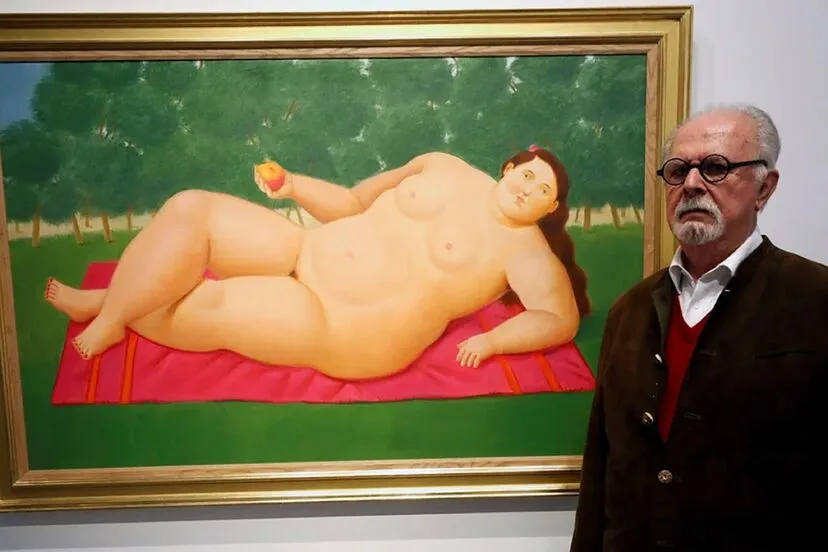
The world mourns the loss of the iconic Colombian artist, Fernando Botero. In this article, we delve into the circumstances surrounding his death, the causes, and his enduring legacy.
Fernando Botero's Passing
Renowned Colombian artist Fernando Botero, celebrated for his unique artistic style characterized by plump, exaggerated, and often satirical figures, breathed his last at the age of 91. The art world is left in mourning as we bid farewell to a true visionary.
The Final Moments
Fernando Botero's demise occurred on September 15 at a hospital in Monaco. He had been battling two formidable adversaries: pneumonia and Parkinson's disease. The news of his passing was confirmed by his close friend, Mauricio Vallejo, co-owner of the Art of the World gallery in Houston. Botero's struggle against these ailments was a testament to his unwavering spirit.
A Glimpse into Botero's Life and Work
The Early Years
Born in Medellin, Colombia, in 1932, Fernando Botero displayed an early affinity for the world of art. He embarked on his artistic journey as an illustrator for newspapers and magazines, eventually relocating to Bogota and later Europe. During his European sojourn, he immersed himself in the works of the old masters, laying the foundation for his distinctive artistic style.
Boterismo: A Unique Artistic Expression
Botero's oeuvre is characterized by his signature style of portraying people and figures with exaggerated volumes, a technique he fondly referred to as "Boterismo." His intention was not to create caricatures or critiques but to express his profound admiration for life itself. His canvases were often adorned with scenes from Colombian culture, politics, history, religious themes, still lifes, and portraits.

Controversial Yet Impactful
Botero's artistic journey wasn't devoid of controversy. He fearlessly explored contentious subjects, including a series on the violence associated with drug lord Pablo Escobar and the harrowing torture of prisoners at Abu Ghraib. These works challenged the status quo and shed light on pressing societal issues.
Sculpting a Monumental Legacy
In the 1970s, Botero expanded his artistic horizons by venturing into sculpture. He crafted colossal bronze figures, depicting animals, fruits, musicians, and dancers. These monumental sculptures found homes in public spaces across the globe, gracing cities like New York, Paris, Madrid, and Berlin. Botero's sculptures became an integral part of urban landscapes, captivating the hearts of millions.
A Revered Figure in Latin American Art
Fernando Botero's impact transcended borders. He held the distinction of being one of the most recognized and quoted living artists from Latin America. Major museums, corporations, and private collectors coveted his art. His creations found their way into prestigious collections, cementing his status as an artistic luminary.
Fernando Botero's Enduring Legacy
Family and Philanthropy
Botero is survived by his wife, Sophia Vari, a Greek sculptor with whom he shared his life since their marriage in 1978. He also leaves behind three children from his previous marriage to Gloria Zea, a former Colombian culture minister who passed away in 2019. Beyond his immediate family, Botero's legacy is deeply intertwined with his commitment to art and philanthropy.
A Generous Soul
Fernando Botero's generosity knew no bounds. He selflessly donated hundreds of his artworks to museums both in Colombia and around the world. His collection included pieces by other artists, showcasing his dedication to making art accessible to everyone, regardless of their means or location. In his own words, Botero eloquently captured the essence of art: "Art is a permanent joy. Art is one of the few things in life that does not let us down." His enduring passion and magnanimity ensure that his impact will resonate across generations.
Read more: Marley and Elijah Thomas: The Dagenham Tragedy – Kara Alexander Murdering His Own Child Case
Conclusion
In commemorating the life and art of Fernando Botero, we honor a remarkable artist whose unique vision, courage, and generosity left an indelible mark on the world. His passing marks the end of an era, but his artistic legacy will continue to inspire and captivate generations to come.
Frequently Asked Questions (FAQs)
Q1: Who was Fernando Botero, and why is he famous?
A1: Fernando Botero was a renowned Colombian artist known for his distinctive style characterized by plump and exaggerated figures. He gained fame for his paintings, sculptures, and contributions to the art world.
Q2: How did Fernando Botero die?
A2: Fernando Botero passed away due to pneumonia and Parkinson's disease. He died on September 15 at a hospital in Monaco.
Q3: What is "Boterismo," and how did Fernando Botero develop this style?
A3: "Boterismo" is a term coined by Fernando Botero to describe his unique style of portraying people and figures with exaggerated volumes. He developed this style as a way to express his admiration for life, emphasizing the joyful aspects of existence.
Q4: What are some notable works by Fernando Botero?
A4: Fernando Botero's works include paintings that depict Colombian culture, politics, history, religious themes, still lifes, and portraits. He is also known for his controversial series on drug lord Pablo Escobar and the Abu Ghraib prison. Additionally, Botero created large bronze sculptures of animals, fruits, musicians, and dancers.
Q5: What is Fernando Botero's legacy, and how did he contribute to philanthropy?
A5: Fernando Botero's legacy goes beyond his art. He generously donated hundreds of his works to museums worldwide, aiming to make art accessible to all, regardless of their means. His commitment to sharing the joy of art is a testament to his passion and generosity, ensuring his impact will endure for generations to come.
